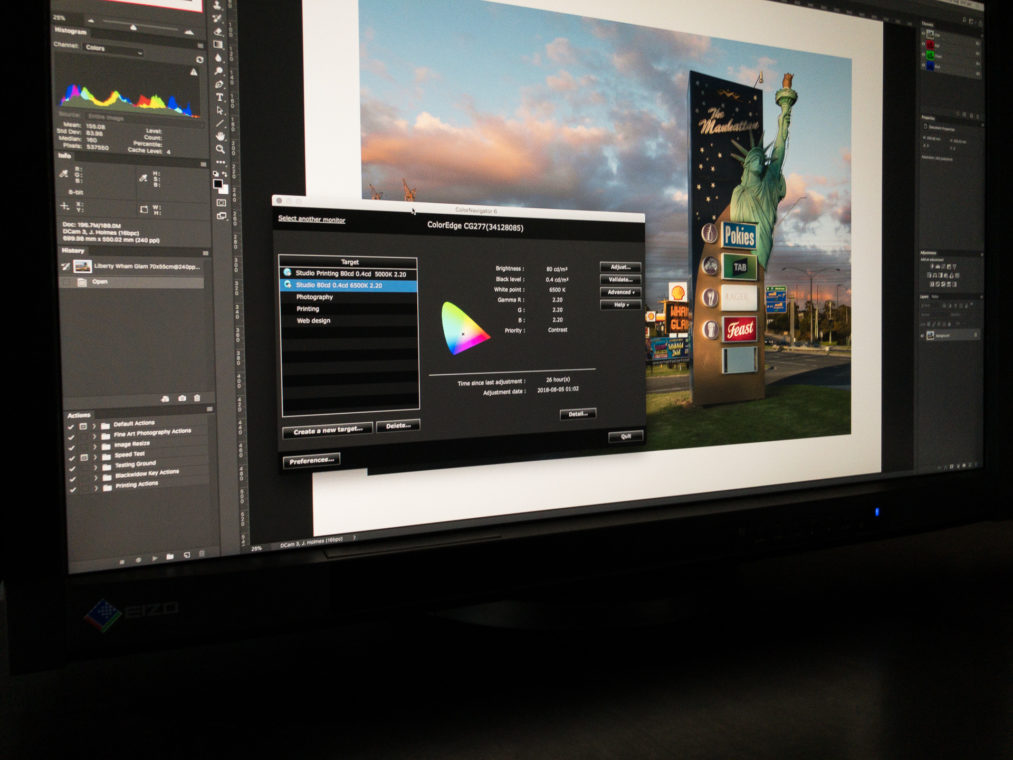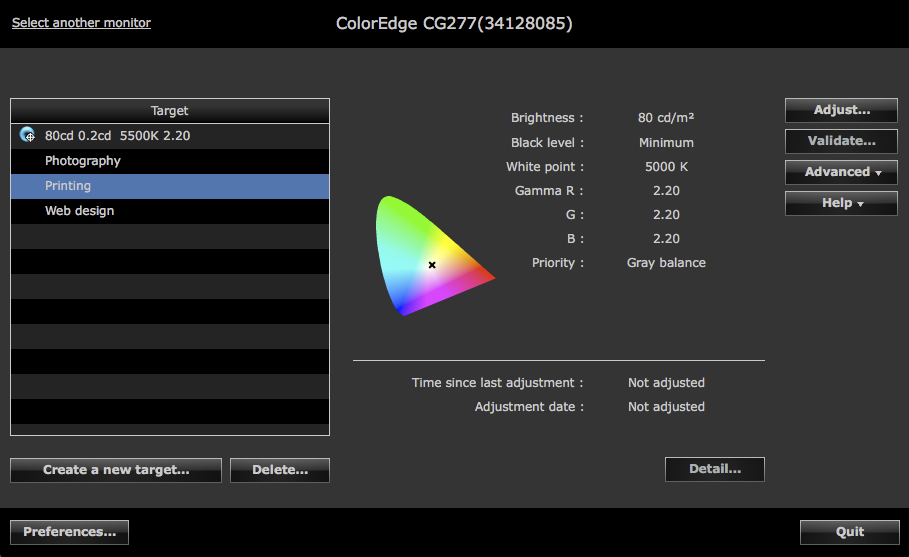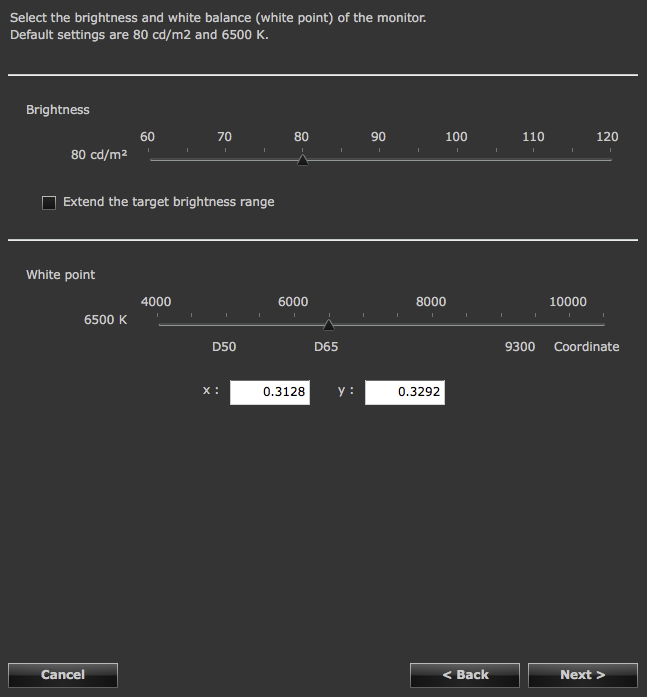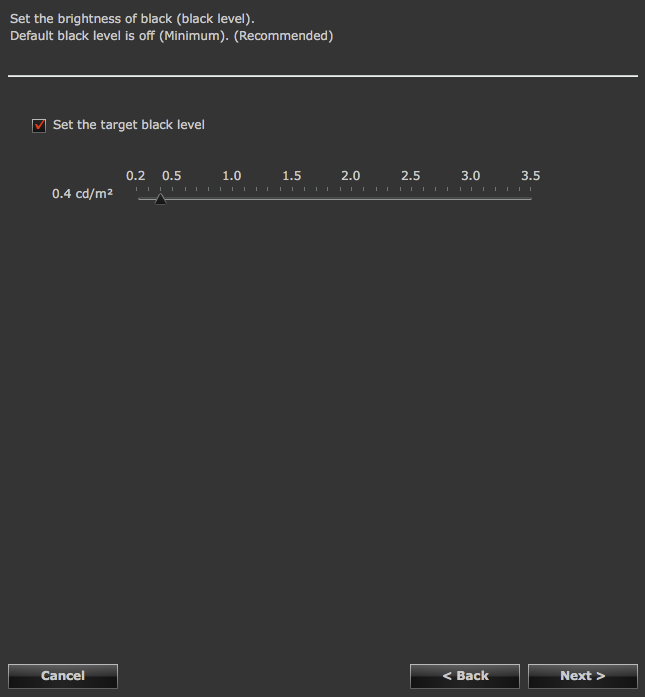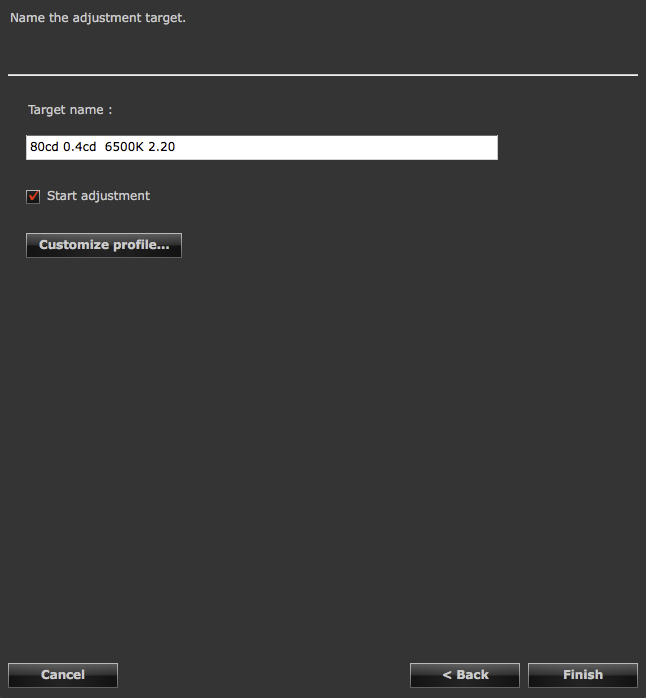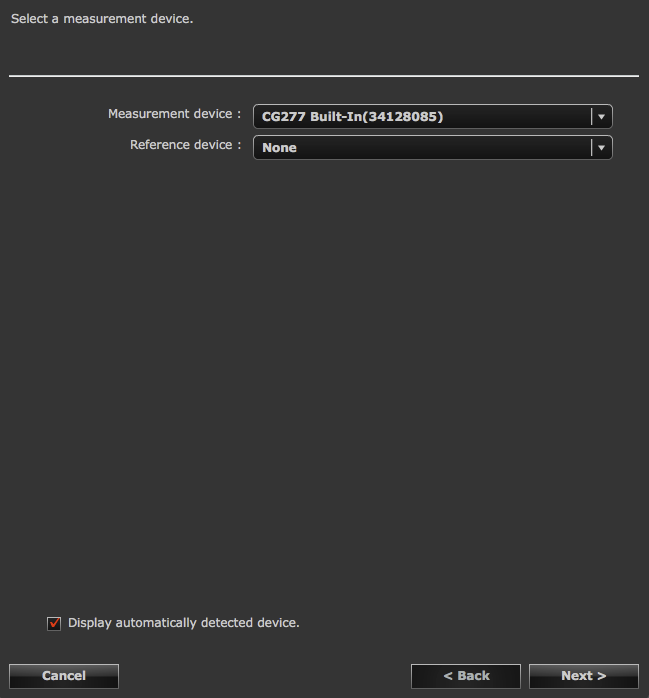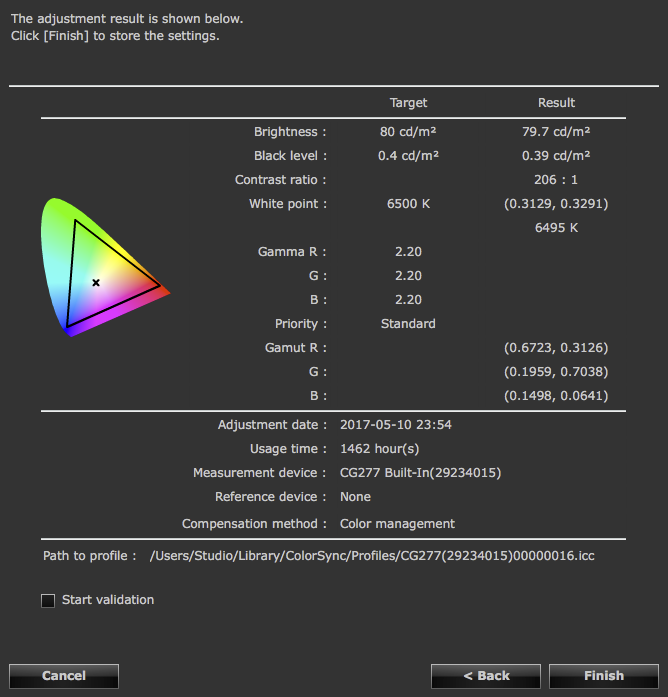There are two ways to adjust a monitor when photographic colour accuracy and consistency is required.
Calibration refers to adjustments that effect the hardware of a monitor and enable the shifting of colours to a target white point (colour temperature), maximum black, and luminance. These adjustments are commonly completed using instrumentation.
Profiling refers to set of software instructions that request the colour to be displayed differently. Settings include a target white point (colour temperature), maximum black and luminance. These adjustments can be completed using instrumentation or through a visual process. No adjustments to hardware are made.
Calibration is the most accurate way to adjust a monitor, and requires specialist hardware and screen types. As of 2018 no Mac laptop or iMac enables monitor calibration (only profiling). The Eizo ColorEdge screens in Building 2 Photography allow for advanced calibrations to the highest standard.
Monitor Calibration
Conditions of use will affect the settings and parameters for calibration. For photography there are two different standards used that affect our viewing;
Colour critical work for reviewing image captures, assessing colour accuracy, editing, and compositing images. This is the most common standard for use, and sets a daylight neutral white point.
Print simulation work for preparing images to print and making adjustments for printing. This would be done in conjunction with printing.
Targets & Settings
Note the settings on the following chart as optimum settings for monitor calibration in a photographic editing and printing environment.
| Colour Critical Work | Print Simulation | |
|---|---|---|
| Target White Point | 65000 | 5000 |
| Luminance | 80cd/m | 80cd/m |
| Maximum Black | 0.40cd/m | 0.40cd/m |
| Gamma | 2.2 | 2.2 |
| Contrast Ratio | 1:200 to 1:250 | 1:200 |
| Room Light | Low (30 to 60 lux) | < 30 lux |
Refer to this table when querying specific settings in calibration software, and use these settings when calibrating the RMIT Photography Eizo Screens in Building 2.
Further information on monitor calibrations is available from Melbourne artist and ex RMIT staff member, Dr Les Walkling’s website
